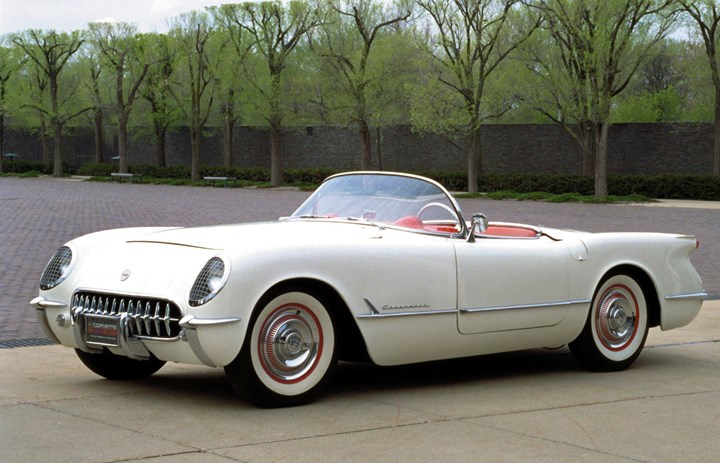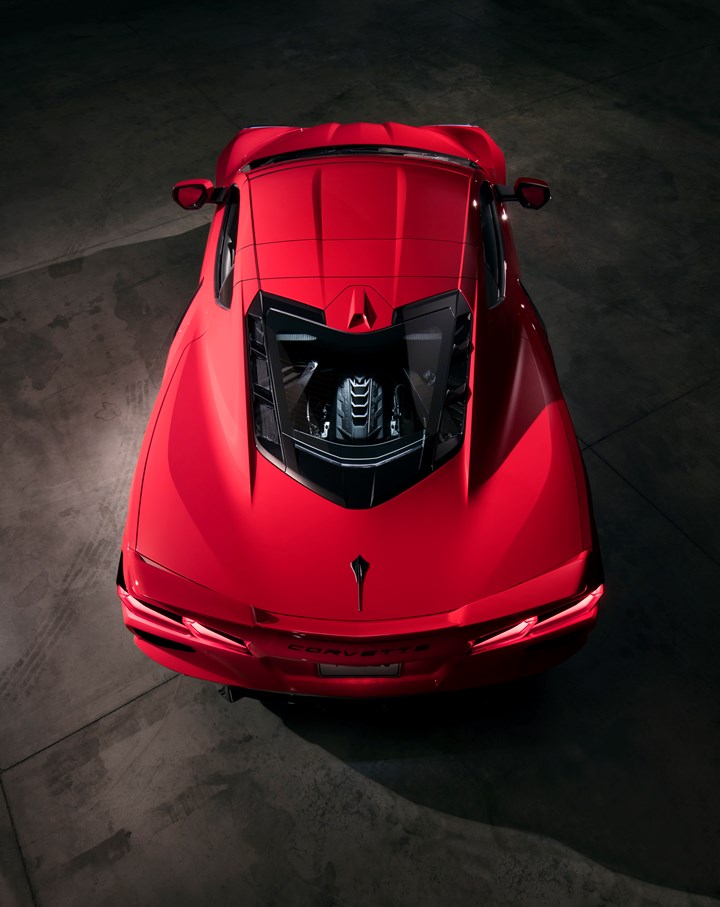2020 Chevrolet Corvette: Long Time Coming
Yes, the 8th generation Corvette is red-hot
#Acura #aluminum
The thing about the Corvette is just how long-lasting the nameplate is. The first version of the sports car arrived in 1953. How long ago was that? Think of it this way: Eisenhower was inaugurated. Sir Edmund Hillary and Tenzing Norgay make the first ascent of Everest. Queen Elizabeth II became Queen Elizabeth II. Crick and Watson came out with the double-helix model for DNA. All of these things seem like they are the stuff of history. And they are. And the Corvette is. Because it is one of the few nameplates in automotive that have had such a long run. (The folks at Chevy are undoubtedly happy that they have the oldest continuously running nameplate: Suburban. But the ‘Vette is up there, too.)
And now there is C8. The 8th generation.

(Images: Chevrolet)
The C8 is the first Corvette to have a mid-engine configuration, with the 495-hp, 6.2-liter small block V8 sitting behind the cockpit under a glass cover so people in parking lots or who are stopped at a red light in a vehicle that is likely higher than the 48.6 inches of the Corvette can see what’s what in there. (The Corvette team designed every visible element of the engine knowing full well that this would be something on display. Yes, there is that much attention paid to the C8 execution.)
The mid-engine configuration is the most notable aspect of the 2020 Corvette. Other cars have this setup. The Acura NSX. Alfa Romeo 4C. Audi A8. Ferrari F8 Tributo. Ford GT. And more. Lambo. McLaren. Porsche. Vehicles all that have a certain special pedigree.
And so now there is the C8. The 8th generation. With a mid-engine configuration.
Why would is an engine put there rather than in the front? Because of better weight distribution. Remember: the Corvette has been all about weight efficiency since the very first car: it has a body made with fiberglass, which not only allowed the ability to create better styling, but also provided a benefit to the power-to-weight ratio.

The first Corvettes were produced in Flint, Michigan. In 1954 the production moved to St. Louis. Since 1981, in the waning days of the C3, the Corvette has been built in Bowling Green, Kentucky. More than a million have been produced there.
In April GM chairman and CEO Mary Barra went to the Bowling Green plant and announced, “This is the workforce that can deliver a next generation Corvette worthy of both its historic past and an equally exciting future.” The decision was made that they’d add a second shift to the plant and increase the number of workers there to more than 1,300. There are high levels of optimism for the 2020 Corvette at the highest levels of General Motors.
Consider, the first full year of sales for the Corvette C7 was 2014. That year GM delivered 34,839 Corvettes in the U.S. In 2015, the number was down to 33,329. And 2016 saw a further decline to 29,995. Then a nearly 5,000 units were taken out in 2017, down to 25,079. Then a decline of 25.1% from 2017 to 2018: 18,791.
Yet, they’re adding a second shift.
GM president Mark Reuss, when introducing the 2020 Corvette, said that one of the objectives for the development of the new vehicle was to “push the boundaries of engineering and design.

The design, of course, speaks for itself.
And the engineering is extraordinary (Reuss called the C8 “Our Corvette moonshot,” as the theme of the introduction related to the 50th anniversary of Apollo 11 and included presentations by former astronauts Mae Jepesen and Scott Kelly), including a mixed-material construction that’s heavy on lightweight high pressure aluminum castings.
According to Tadge Juechter, Corvette executive chief engineer, the car has a 0 to 60 mph time of under three seconds.
And the starting price is under $60,000.
Which just might explain why they think the manufacturing folk at Bowling Green are going to be extremely busy.

RELATED CONTENT
-
Mercedes Unveils EQC, an Electric Crossover
“A dawn for a new era of our company.” That’s how Dieter Zetsche, CEO of Mercedes-Benz Cars, described the EQC at the vehicle’s official introduction at an event in Stockholm today. “It is the complete package,” he said, ticking of the boxes for design, usability, serviceability and convenience.
-
2021 Honda Accord Hybrid Touring
Where efficiency meets surprising luxury
-
Developing the 10th-Generation Honda Civic
The 2016 model is all-new. As in platform and everything else. And the platform—which will have global use—was developed in North America.


.jpg;width=70;height=70;mode=crop)